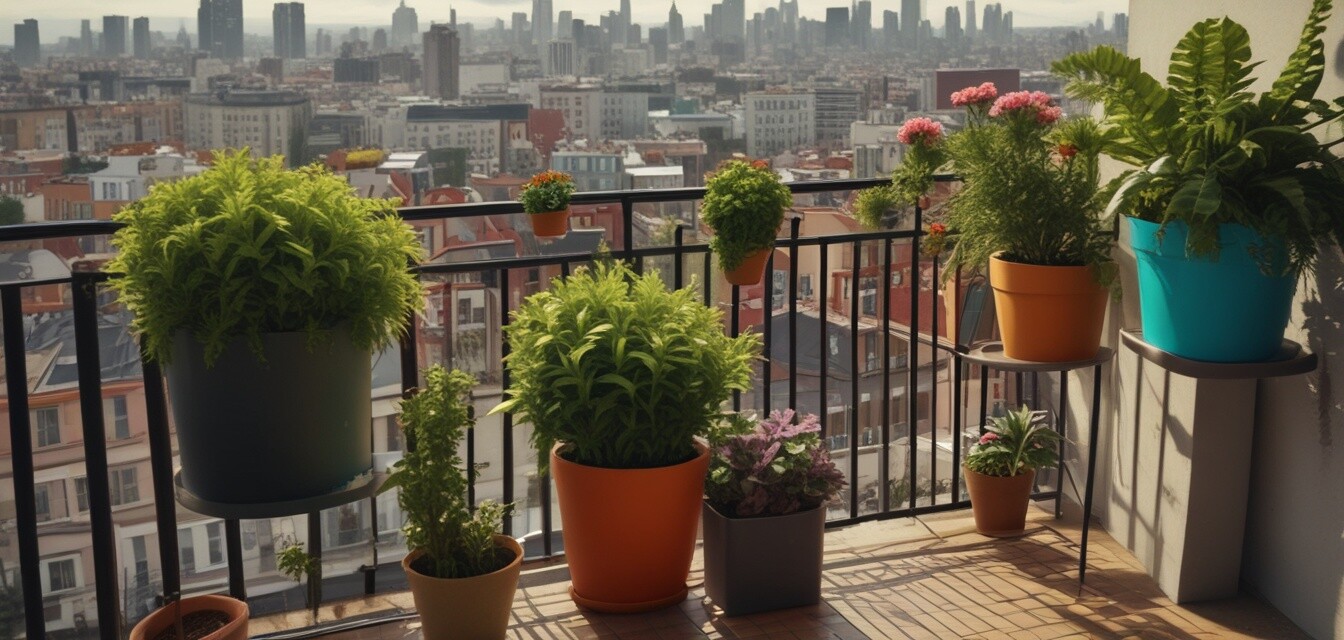
Techniques for reviving overwatered plants
Key Takeaways
- Overwatering can lead to root rot and other health issues in plants.
- Immediate actions like removing excess water and improving drainage are crucial.
- Repotting in fresh soil may be necessary for severely affected plants.
- Monitoring humidity and using appropriate watering techniques can prevent future issues.
Overwatering is a common issue for balcony gardeners that can devastate lush green plants. When waterlogged soil deprives roots of oxygen, plants suffer from root rot and other complications. However, fear not! With the right techniques, you can revive your loved plants and return them to their green glory.
Understanding the effects of overwatering
Before diving into revival techniques, it's essential to understand what happens to plants when they are overwatered. Here’s a quick overview:
| Effect | Description |
|---|---|
| Root Rot | Roots begin to decay due to lack of oxygen, leading to overall plant decline. |
| Yellowing Leaves | The presence of excessive moisture can cause leaves to turn yellow and drop. |
| Mold Growth | Overly moist conditions promote mold and fungus growth on soil and plant surfaces. |
| Wilting | Interestingly, overwatered plants may also exhibit wilting as roots can’t uptake water properly. |
Steps to revive overwatered plants
If you suspect your plant has been overwatered, follow these steps for recovery:
- Remove excess water: If your plant is in a pot with drainage holes, ensure any excess water is drained out.
- Check the roots: Remove the plant from its pot to assess the roots. Healthy roots should be firm and brownish. Mushy, black roots indicate rot.
- Prune dead roots: If you find decayed roots, use sterilized scissors to cut them away.
- Repot the plant: Replace the old soil with fresh, well-draining soil mix suitable for your specific plant.
- Water sparingly: After repotting, water the plant lightly and allow it to dry out before watering again.
Preventing future overwatering issues
Prevention is always better than cure. Here are some tips to successfully manage watering your balcony plants:
Beginner's Tips
- Use pots with drainage holes to prevent water accumulation.
- Invest in moisture meters to check soil moisture levels accurately.
- Understand the water requirement of each specific plant type.
- Water in the morning, allowing plants to absorb moisture throughout the day.
Monitoring humidity and soil conditions
High humidity can affect how often you need to water your plants. On your urban balcony, monitoring humidity is key:
- Consider using a humidity gauge to know the right moisture levels for your plants.
- Ensure air circulation is sufficient to help with water evaporation.
- Group plants with similar watering needs together for easy care.
How to tell if your plants are recovering
It can take time for your plants to bounce back after being overwatered. Look out for these signs of revival:
- New leaf growth is a positive indication of recovery.
- Colorful foliage returning to its natural hue.
- A healthy top layer of dry soil as moisture distributes evenly.
Pros
- Overwatered plants can often recover with the right steps.
- Many indoor plants are naturally resilient and can adjust to new conditions.
- Having knowledge of plant care leads to healthier long-term growth.
Cons
- Severe root rot may result in permanent damage or loss of the plant.
- Recovery can take time, leading to a frustrating gardening experience.
- It may require multiple interventions to fully revive a plant.
Conclusion
Reviving overwatered plants is not just about saving them; it’s about learning from mistakes and setting the groundwork for healthier plants in the future. Taking the time to assess and implement proper gardening habits can transform your balcony into a vibrant oasis. For more gardening tips, check out our Gardening Tips, or learn more about Balcony & House Plants that will thrive on your balcony.